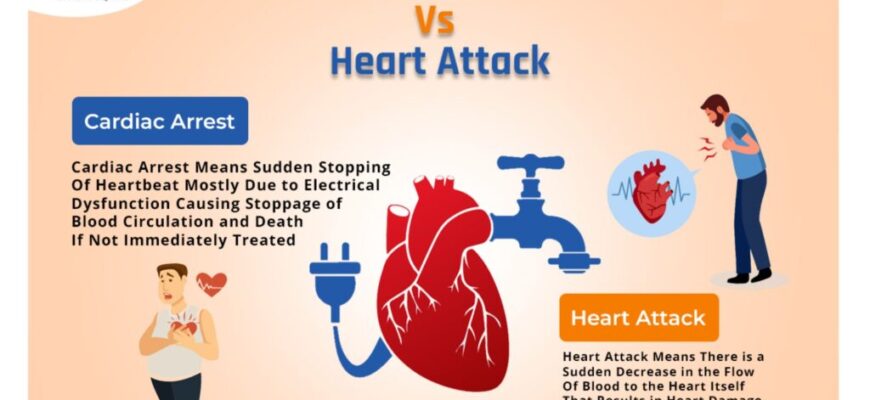Sudden cardiac arrest (SCA) in young individuals, particularly athletes, is a tragedy that often strikes without warning, leaving families and communities in shock. This devastating phenomenon, frequently attributed to Sudden Arrhythmic Death Syndrome (SADS), has long been shrouded in a grim mystery. However, groundbreaking research from the University of Gothenburg in Sweden is beginning to pull back the curtain, identifying crucial early warning signs that could, quite literally, be the difference between life and death.
Unmasking a Silent Killer
SADS is a term used when a young person dies suddenly from cardiac arrest, and no clear cause is found during a post-mortem examination, suggesting an underlying genetic or inherited heart condition causing an arrhythmia. It`s a particularly insidious condition because it often affects seemingly healthy individuals, sometimes at the peak of their physical prowess. The challenge has always been its unpredictable nature – how do you intervene when there are no apparent symptoms?
The Gothenburg team embarked on a meticulous decade-long study, analyzing 903 cases of sudden cardiac death in individuals aged 1 to 36 across Sweden between 2000 and 2010. Their objective was clear: to scour medical records and family histories for any overlooked clues, any faint whispers from the heart that might have hinted at the impending crisis. What they uncovered offers a critical pathway to prevention.
The Red Flags Emerge
Their findings, presented at the ESC Preventive Cardiology 2025 congress and published by the European Society of Cardiology, revealed that a significant 22% of these tragic deaths were attributable to SADS. More importantly, a discernible pattern of pre-event symptoms emerged.
Key indicators that frequently preceded SADS included:
- Syncope (fainting): Often dismissed as benign, fainting spells can be a critical sign of underlying cardiac electrical instability.
- Seizure-like episodes: These neurological events, while seemingly unrelated to the heart, can sometimes be a manifestation of inadequate blood flow to the brain due to cardiac issues.
- Abnormal electrocardiogram (ECG) changes: While some changes are subtle, a trained eye might spot anomalies that indicate a predisposition to arrhythmias.
Beyond these more direct cardiac or neurological manifestations, a startling revelation was that over half of the individuals reported more generalized symptoms in the time leading up to their death. These included:
- Palpitations: A feeling of the heart racing, fluttering, or pounding.
- Nausea and vomiting: Symptoms often associated with gastrointestinal distress, but in this context, they warrant a closer look.
- Infection-like symptoms: General malaise that might be easily mistaken for a common cold or flu.
The Unheeded Warnings: A Medical Blind Spot?
Perhaps one of the most sobering discoveries was the fact that approximately one-third of these young individuals had actually sought medical attention within six months of their death. Yet, despite these visits, the early warning signs remained largely unrecognised or misinterpreted. It`s a stark reminder that even within our advanced healthcare systems, some signals, subtle yet profound, can slip through the cracks. One might reasonably expect a visit to the doctor to act as a robust safety net, but this study suggests our current diagnostic mesh might have a few surprisingly large holes.
The researchers also noted that some patients already had documented diagnoses of arrhythmias or even psychiatric disorders, which could potentially complicate risk assessment or mask the cardiac origins of symptoms. This underscores the need for a holistic approach to patient evaluation, where the heart is considered alongside the mind, especially when unusual symptoms arise.
Towards a Future of Prevention
The implications of this research are profound. The authors advocate for a more systematic and vigilant approach to patient care. This includes:
- Thorough symptom tracking: Doctors should be encouraged to meticulously record and consider seemingly innocuous symptoms, especially in younger patients.
- Broader screening protocols: Implementing more widespread and targeted cardiac screenings for at-risk groups, such as young athletes, could be invaluable.
- Enhanced physician education: Raising awareness among medical professionals about these specific SADS precursors is crucial for early detection.
By improving our ability to interpret the heart`s quiet warnings, we can move closer to identifying individuals at high risk and implementing preventive strategies before tragedy strikes. This is not merely an academic exercise; it`s a call to action, a chance to turn scientific insight into saved lives and prevent the heartbreak of sudden, unexplained loss.








